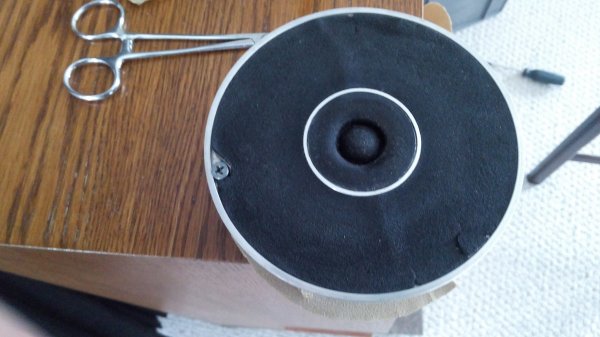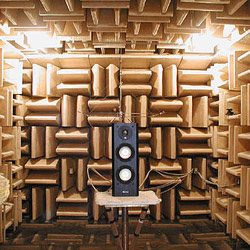Could be a Revel F12. Not sure of the MSRP, but it is close to that. A model that has been out a few years.
It is
not the
Revel Concerta F12. ...Different specs and different measurements and different price ($1,500/pair MSRP).
Dr.Floyd's has long been known as a speaker guru within Canada. And I'm pretty certain I know the $1.8k speaker he refers. While he was working at Canada's National Research Council, he helped design a very *accurate* monitor speaker for CBC studios. The company helping to develop & manufacture this speaker was Audio Products International (well prior to being purchased by Klipsch) who's main brand were Energy & Mirage. The R&D cost supposedly went into the millions, as the NCR facilities were not cheap.
The price ($1,800) and the freq. curve are telling clues, this the exact cost of this speaker when introduced, with identical specs.
It is not the
Energy 22 Reference Connoisseur and/or
Energy Reference 22 loudspeaker; different price (on the first), different measurements.
It's a 1987-88 circa speaker, and was one of the very best @ that price and above, much more above. ...Very good guess, and I am not 100% certain that it is not. But I looked @ the measurements, same type of measurements showed in that book by doctor Floyd E. Toole, and they differ (not the exact same).
If indeed it is this speaker, and I'm pretty certain it is, it would cost considerably more today to manufacturer. It used expensive proprietary drivers, a well designed xover, and a solid well designed (in & out) cabinet. It also invited specific mods, which raised it's performance considerably. IIRC, UHF Magazine still use a pair in there HT based reference system.
The
Energy Reference 22 Connoisseur was $2,600/pair back in 1988. The less expensive
Energy Reference 22 was indeed in that neighborhood of $1,800/pair.
But again, the measurements are not the exact same. ...But who knows for certain if doctor Toole was not referring to that second one....
? I also looked @ several other loudspeakers; all @ $1,800/pair and with same measurements (full range). ...From way back then to today, and all the JBL and Revel and Harman Kardon loudspeakers, plus all the big Canadian names; Energy, Mirage, Image, PSB, PMC, Paradigm, Newform Research, DCM Time Frame, Axiom (Axiom
M2 by the way, but a smaller 2-way monitor speaker @ $462/pair Canadian), also the
Aperion Audio Verus Grand ($1,800/pair), the
Atlantic Technology AT-2 ($1,800/pair), the
NHT Classic Four ($1,800/pair), the
Revel Performa F206 ($1,800
each), some
Snell Acoustics loudspeakers,
and the
PSB Stratus Gold. ...That last one; that could be it. ...I'll look more into it, before Amir can find out.
*
Energy Veritas v1.8 ? ...No, but great speaker.
**
Paradigm Reference Studio 100 v2 ? ...No, but great speaker too.
By the way, I searched for over more than two hours (yesterday). ...And more with today (this morning).
Probably a pair of Genelec's
The Genelec pro studio active monitors (some models) have the
best speaker measurements ever, along with some Magico loudspeaker models.
And a certain Genelec active monitor model is in that range of approximately $1,800/pair. Genelec has some "reference" measurements that all other speaker's manufacturers aspire to.
Some active ATC loudspeakers are also very impressive in their performance/measurement ratio.
<<<>>> Active loudspeakers are the future today; I agree with doctor Toole. ...With integrated DSP room correction and equalization. ...In my own opinion.
...Like some Meridian loudspeakers. ...McLaren loudspeakers?
? Genelec active pro monitors are the best. ...IMO
___________
Cool thread, cool video provided by John our OP.

...Rewarding back to my sources, in time when I was younger and auditioning all the best great Canadian loudspeakers.
I had few of them in different places I was renting back in the 80s and early 90s. ...Mirage M1 among them. ...They never made the M2. ...But they did make the M3.
.








